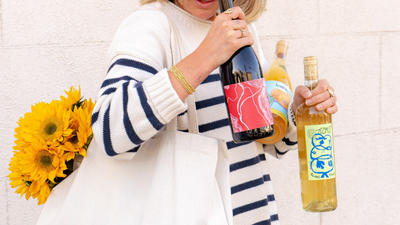Alto Adige
At first sight, you’d think you are not in Italy anymore. The landscape, the language, and the look of the people suggest Germany or Austria, not Italy. You are in a border territory that has been through a history of being divided, conquered, and shared between separate nations. But the people who live there have a strong sense of belonging to this region. They are less interested in the geopolitics and more focused about their own culture and tradition.
Alto Adige, also known as Südtirol, was first created by Napoleon to distinguish the German speaking territory that belonged to Austria from the attached region below and Italian speaking Trentino.
Since the 1970s, due to their specific history and linguistic peculiarity, most legislative and administrative powers have been transferred to the two self-governing provinces that make up the region: the Province of Trento, commonly known as Trentino, and the Province of Bolzano, commonly known as South Tyrol (Sudtirol).
The cultivation of the vine in this region goes back to the Roman times. The valleys of the Adige River and the Isarco River, shielded at north by the Atesine Alps, benefit from a Mediterranean climate, even if it’s the northern Italian region.
Only two red grapes are native to this area; Lagrein and Schiava (Vernatsch). The list of the white varietals is much longer: Sylvaner (the result of crossing Riesling with Trollinger), Riesling, Muller-Thurgau, Traminer, Vertliner, Kerner, Pinot Bianco (Weissburgunder), Sauvignon, Pinot Grigio.
Elio Longobardi, Italian Wine Specialist
PlumpJack Wine & Spirits – Noe Valley
Kofererhof, Sylvaner, Alto Adige Valle Isarco DOC 2018
About the Winery: Weingut Köfererhof is one of Italy’s smallest and best white wine producers. The Kerschbaumer family has been making wine since 1940 when they acquired the property. The Kofererhof estate has existed in southern Tyrol, a region that is more Austrian in spirit than it is Italian, for over 850 years.
In 1995, the winery started to bottle its own wines, after having sold its fruit for years. Kofererhof’s few hectares of vines are located at the base of the Dolomite mountains between 700 and 800 meters above sea level. At this high altitude, the variation in temperatures from day to night is ideal, and the carefully tended, high-density vineyards yield intensely fragrant, concentrated and well-balanced wines.
Kofererhof is a practicing organic winery. Integrated insect and disease control is followed scrupulously.
About the Winemaking: 100% Sylvaner from 1.3ha of vineyards at 650m above sea level. Maceration with the skins for 8-10 hours, followed by a soft crushing of the clusters and fermentation in stainless steel vessels. The wine matures 80% in steel and 20% in large oak casks, remaining for 6 months on the lees before release.
Tasting Notes: When first poured in the glass, what surprises you is the color; scintillating green reflections on yellow! But it’s not “green” on the nose. There is more stone yellow fruits than herbal notes. Then moss, lychee and green tea. To the taste, it shows a complex fruity body with a lingering acidity that leaves the palate clean and ready for more.
Franz Gojer, Vernatsch Alte Reben, Südtiroler DOC 2018
About the Winery: On this traditional farm [Glögglhof], vines have always been cultivated - Vernatsch on the hills and Lagrein on the plains of the river Eisack/Isarco. Franz Gojer took over the family business in 1984.
The Glögglhof Winery is a small family-run business in the heart of the traditional St. Magdalena wine-growing area. This is where the Gojer family produce wines from indigenous grapes such as Vernatsch (or Schiava) and Lagrein as well as Weißburgunder (Pinot Bianco), Sauvignon and Kerner (a cross between Schiava and Riesling) with their characteristic flavours.
The vineyards of St. Magdalena gently roll at the edge of the city Bozen/Bolzano, south of the Dolomites. The Glögglhof, which dates back to the 14th century, nestles amidst these picturesque vineyards. Winemaking has been a tradition for many generations at this historical estate and is continued by the Gojer family.
About the Winemaking: Schiava, which is the Italian for 'slave,' presumably from the high yields that the vines can carry, is the Italian name for this variety. However, the producers usually use their local name, Vernatsch. The German name for the grape is Trollinger, which is a corruption of 'Tyrolinger,' meaning 'from the Tyrol,' confirming that the variety is indigenous to the area.
This wine comes from very old vines grown (unusual for a red wine) at high altitude, at the Karneid property. Hand-picked, gentle pressing and slow controlled fermentation; fermented and aged in stainless steel.
Tasting Notes: Ruby red in color. Fruity and floral with a distinctive sour cherry and almond prophile on the nose. A juicy and stimulating acidity is combined with crunchy tannins as an expression of high vineyard elevation.
Rotolo di spinaci (Spinach roll)
INGREDIENTS (serving 4)
- 100 g yellow potatoes
- 80 g butter
- 6 eggs
- 4 tbsp. heavy cream
- 300 g spinach, blenched and chopped
- 1 tbsp. extra virgin olive oil
- 1 clove of garlic
- ½ white onion
- Nutmeg
- Parmigiano
- Salt & Pepper
- Boil the potatoes then riced them.
- In a large bowl beat 6 eggs yolks, reserve the whites.
- Add potatoes to the beaten yolks.
- Add heavy cream, salt, pepper and freshly grated nutmeg.
- Beat the 6 egg whites until fluffy, then add gently to mixing.
- Spead the misture evenly in a baking pan about ¼ inch thick.
- Cook in a pre-heat oven at 350 F for about 10 minutes, then take out from the oven.
- Slice thinly the onion and cook in sautee pan with oil and garlic until smothered.
- Add the spinach and cook for 2-3 minutes.
- Pour evenly the spinach/onion mix on the potatos and make a roll.
- Pour the melted butter and grated Parmigiano, then cut the roll in 1 ½ inch thick slices and serve.




